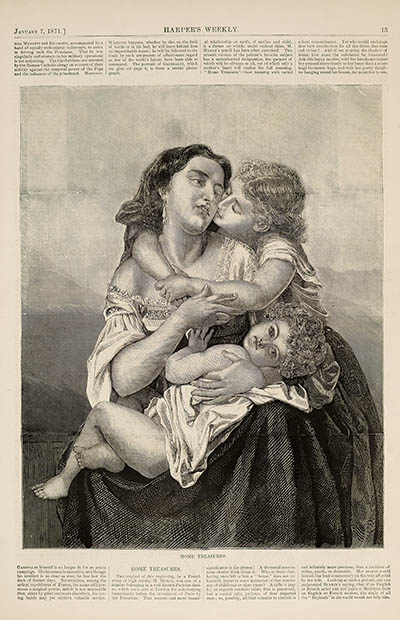Pro Suffrage Organizations
To win the vote, suffragists had to convince the public to accept new gender roles for women. Anti-suffragists feared that female voters would abandon their families and leave domestic chores to men. They claimed that female voters would become less virtuous and more masculine. Women’s votes might destroy the family and, ultimately, American society.
Suffragists argued that female voters would actually improve American life. They contended that women—especially white women—would clean up corrupt politics and support legislation that protected families. Women could remain feminine, run households, and cast ballots. Female voters would not only continue to care for their families; they would do it better.
After the Civil War, suffragists formed two competing national organizations. They disagreed over the 15th Amendment, which granted black men the right to vote. Elizabeth Cady Stanton and Susan B. Anthony opposed the measure and founded the New York-based National Woman Suffrage Association. Lucy Stone supported the 15th Amendment and founded the Boston-based American Woman Suffrage Association. In 1890, Alice Stone Blackwell, Stone’s daughter, facilitated the union of the two groups.
 Susan B. Anthony
Susan B. Anthony
 Elizabeth Cady Stanton
Elizabeth Cady Stanton
 Lucy Stone
Lucy Stone
Stone never gained the prominence that Stanton and Anthony did. For example, while Stone rarely sold her portrait, the famous pair regularly distributed theirs. In the 19th century, women seldom became public figures. Stanton and Anthony wanted the public to view them as political leaders of the suffrage movement.
In contrast, female anti-suffragists did not want the public to see them as leaders. Rather than featuring portraits of themselves, they printed pictures of idealized women to represent their cause.
Americans expected women, especially middle- and upper-class white women, to care for their homes and children. Popular pictures like this engraving, "Home Treasures", from the illustrated newspaper Harper’s Weekly promoted this gendered ideal. American women were supposed to be pious mothers who submitted to their husbands. Married leaders often went by their husbands’ names to emphasize that they believed their husbands represented them.


